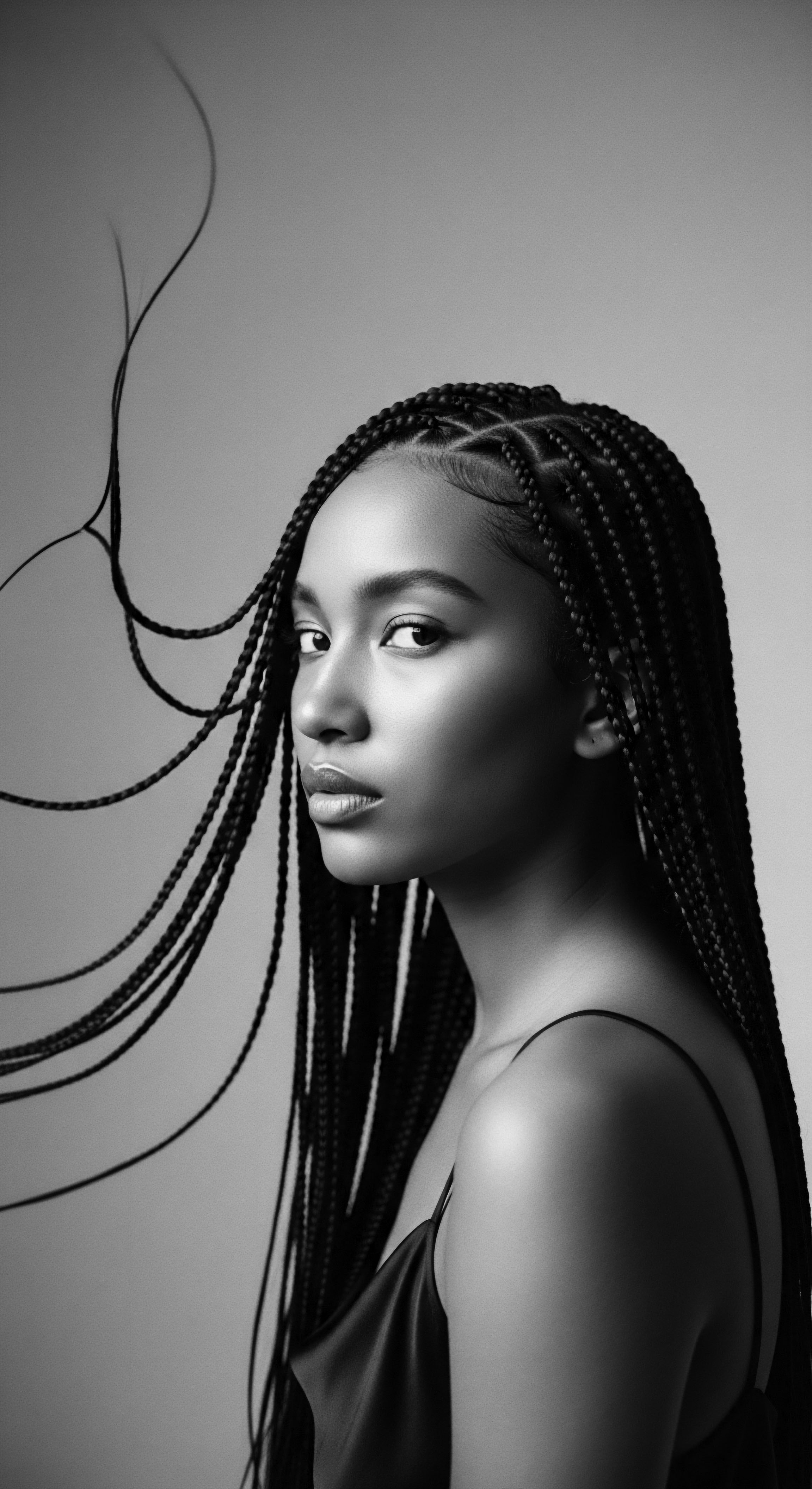
Fundamentals
The study of Hair Care Biomechanics beckons us to consider the very fabric of our strands, not merely as adornment, but as a living testament to physical forces and the enduring wisdom of care. It represents the examination of hair’s mechanical properties – its strength, its stretch, its ability to withstand the myriad pressures of daily existence. This domain considers how hair responds to tension, bending, twisting, and the gentle friction of a comb, delving into the underlying structures that dictate these behaviors.
For those new to this concept, imagine hair as a delicate yet resilient fiber, much like a natural cord. Its inherent design, shaped by countless generations, determines how it holds moisture, how it resists breakage, and how it responds to the hands that tend to it.
Within Roothea’s ‘living library,’ this foundational understanding takes on a special resonance, particularly when we turn our gaze to Textured Hair. Here, the principles of Hair Care Biomechanics illuminate why our coils, curls, and waves behave as they do, offering a pathway to a deeper, more empathetic interaction with our crowns. The physical structure of textured hair, often characterized by its unique elliptical cross-section and a distinctive coiling pattern, inherently influences its mechanical responses. This shape creates points of natural torsion and curvature along the hair shaft, which, while beautiful, also present specific considerations for its structural integrity.
Understanding Hair Care Biomechanics at its most basic level involves recognizing that every brush stroke, every styling choice, and every product applied has a direct interaction with the hair’s physical composition. It is a dialogue between the hair’s innate design and the external world. When we apply a rich butter or a hydrating oil, we are not just adding moisture; we are influencing the hair’s flexibility and its capacity to resist stress.
When we gently detangle, we are consciously working with its tensile capabilities, aiming to prevent unnecessary strain. This basic awareness forms the initial step in a care ritual that honors the hair’s biological blueprint.
The meaning of Hair Care Biomechanics, even in its simplest rendering, points towards a mindful relationship with our hair. It is a recognition that our hair is a marvel of biological engineering, deserving of respect and understanding. This perspective encourages us to move beyond superficial concerns, prompting us to consider the deeper, physical well-being of each strand.
Hair Care Biomechanics, at its core, is the study of how hair physically behaves under various forces, guiding us to care for it with informed respect for its inherent design.
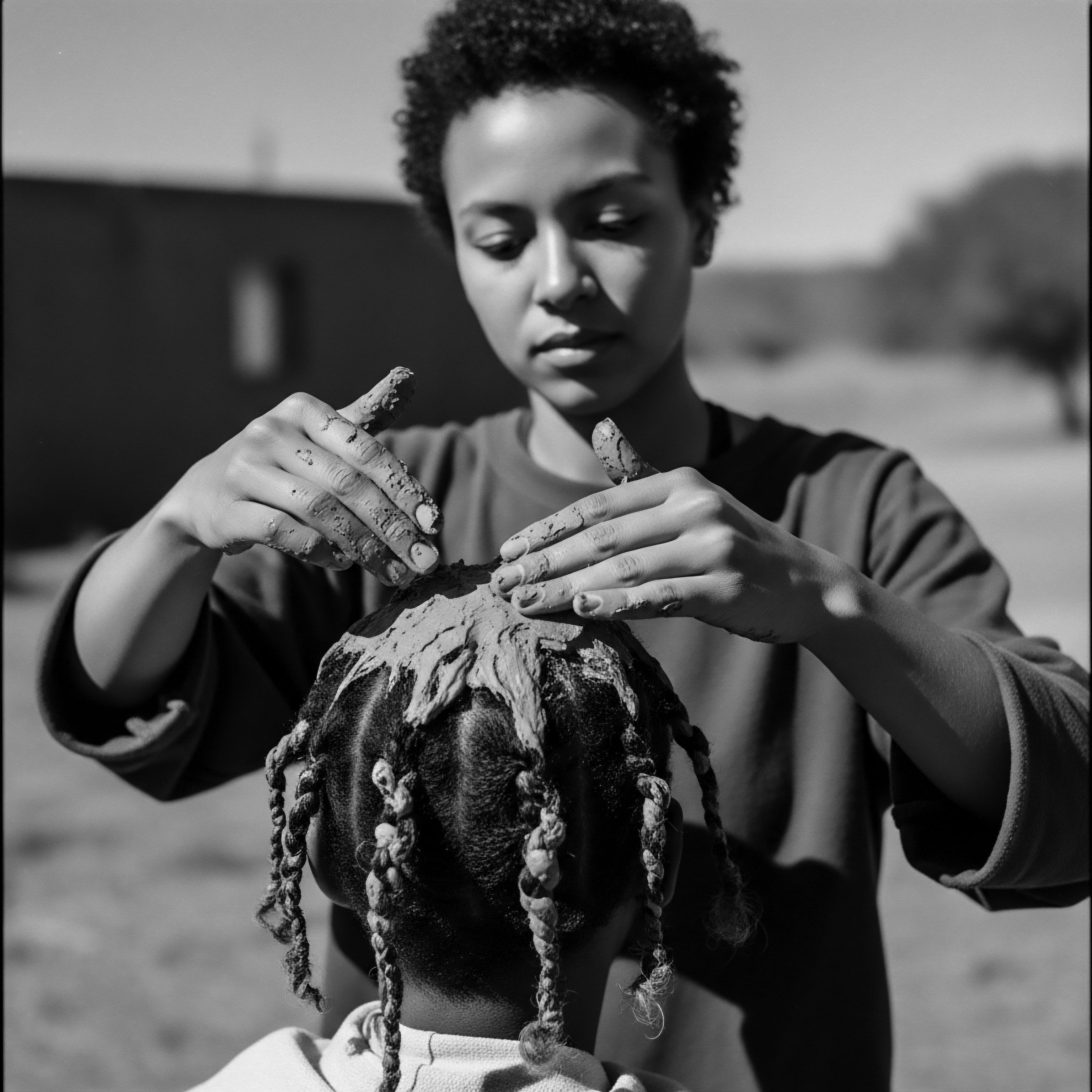
Elemental Design and Ancestral Echoes
The elemental design of textured hair carries the echoes of ancestral landscapes and the ingenuity of early care practices. From the very beginning, communities developed intuitive methods to work with their hair’s natural tendencies. These methods, often passed down through oral traditions and communal rituals, implicitly acknowledged the biomechanical realities of their strands. They understood, without modern scientific terms, that certain plant-based concoctions could soften the hair, reducing friction, or that specific braiding patterns could protect delicate ends from environmental exposure.
- Hydration Rituals ❉ Early communities intuitively understood that moisture was vital. Natural oils and butters, such as Shea Butter from West Africa, were applied to coat the hair, reducing water loss and increasing its pliability, thereby minimizing brittleness.
- Protective Styling ❉ Styles like Cornrows and Braids were not only artistic expressions but also functional designs that minimized manipulation and shielded the hair from harsh elements, directly reducing mechanical stress on individual strands.
- Gentle Cleansing ❉ The use of natural cleansers, like certain plant-based soaps or clay washes, suggests an early recognition of the need to cleanse without stripping the hair’s natural oils, preserving its inherent lubricity and reducing friction.
This fundamental interaction between human hands, natural resources, and the hair’s physical properties laid the groundwork for sophisticated hair care traditions. It was a practice rooted in observation and adaptation, a deep connection to the living world that surrounded them. The early understanding of Hair Care Biomechanics, though unarticulated in scientific terms, was a testament to a profound, inherited wisdom concerning the physical well-being of hair.
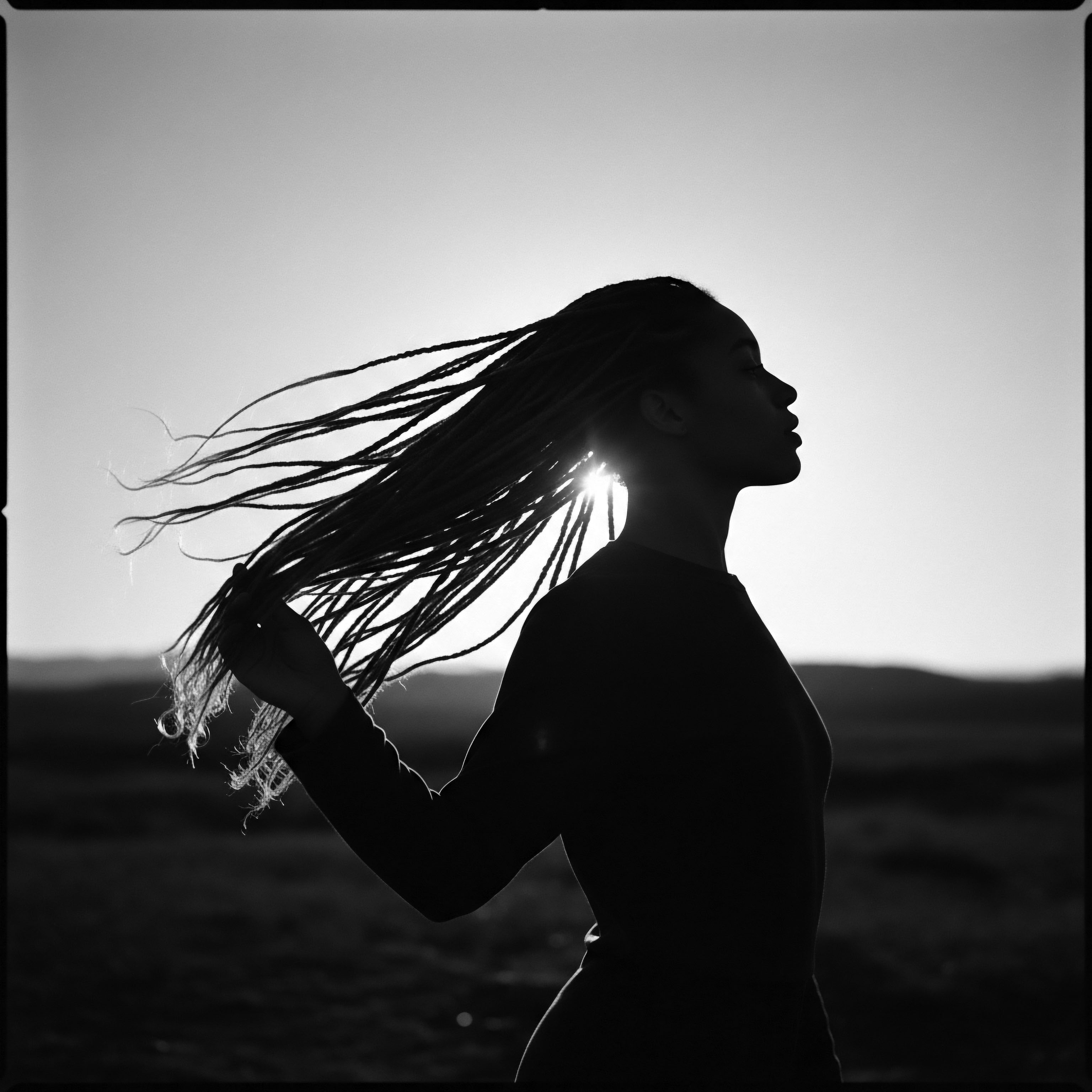
Intermediate
Moving beyond the foundational insights, an intermediate grasp of Hair Care Biomechanics deepens our appreciation for the nuanced interplay of forces and responses within the hair fiber. This involves examining concepts such as Tensile Strength, the hair’s ability to withstand pulling forces before breaking, and Elasticity, its capacity to stretch and return to its original shape. For textured hair, these properties are particularly compelling.
The helical structure of coiled strands, while visually captivating, means that external forces, such as those from combing or styling, are distributed differently along the fiber compared to straight hair. This can lead to localized stress points.
The hair shaft itself is a marvel of engineering, primarily composed of a protein called Keratin. This protein forms intricate alpha-helical structures, which are further cross-linked by disulfide bonds and stabilized by hydrogen bonds. These bonds are the molecular scaffolding that provides hair with its mechanical integrity.
In textured hair, the unique distribution and arrangement of these keratin proteins within an elliptical cross-section contribute to its characteristic curl pattern and, simultaneously, to its specific vulnerabilities. Understanding this internal architecture helps us grasp why a seemingly simple act, like detangling, requires patience and precision to prevent mechanical damage.
Hair’s interaction with water, known as Hygroscopy, also plays a significant role in its biomechanics. Textured hair, with its raised cuticle scales and often higher porosity, tends to lose moisture more readily than straighter hair types. When hair is dry, its flexibility decreases, making it more prone to breakage under mechanical stress. This knowledge informs the crucial emphasis on moisture retention within textured hair care traditions, where practices like sealing in water with oils and butters directly address this biomechanical reality.
The mechanical responses of textured hair, shaped by its unique helical form and protein architecture, reveal the importance of moisture and gentle handling in preserving its strength.
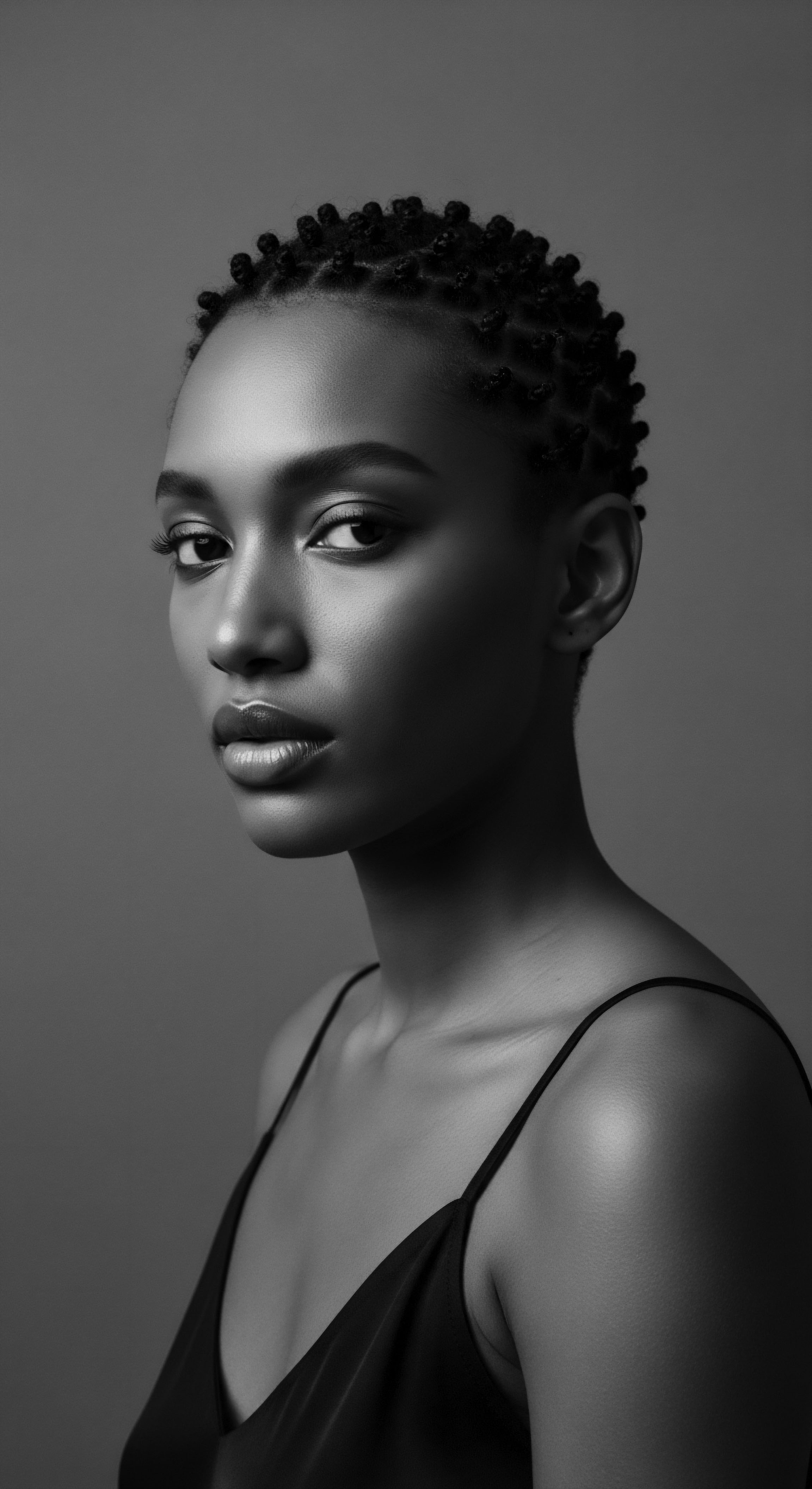
The Tender Thread ❉ Biomechanics in Living Traditions
The concept of Hair Care Biomechanics, while articulated in contemporary scientific terms, finds its ancient roots in the living traditions of care and community that have sustained textured hair for millennia. Ancestral practices were not merely aesthetic choices; they were sophisticated, albeit intuitive, applications of biomechanical principles designed to preserve and protect the hair. The very act of gathering to braid hair, a communal ritual across countless African societies, speaks to a deep understanding of how shared touch and collective knowledge could minimize damage and maximize hair health.
Consider the meticulous process of applying traditional hair pastes, such as those incorporating Chebe Powder from Chad. This powder, a mixture of cherry seeds, cloves, and Croton gratissimus, is traditionally mixed with oils and applied to the hair, then braided in. This practice, passed down through generations, effectively coats the hair shaft, providing a protective layer that reduces friction between strands and minimizes mechanical abrasion. This application helps to retain length by preventing breakage and locking in moisture, directly addressing the inherent fragility that textured hair can exhibit due to its coily nature.
The consistent use of plant-based oils and butters, like Coconut Oil or Avocado Butter, was a direct biomechanical intervention. These emollients reduced the coefficient of friction between hair strands, making detangling less damaging and decreasing the likelihood of knots and tangles that could lead to breakage. Such applications also enhanced the hair’s viscoelastic properties, allowing it to stretch and recoil more effectively without permanent deformation or fracture.
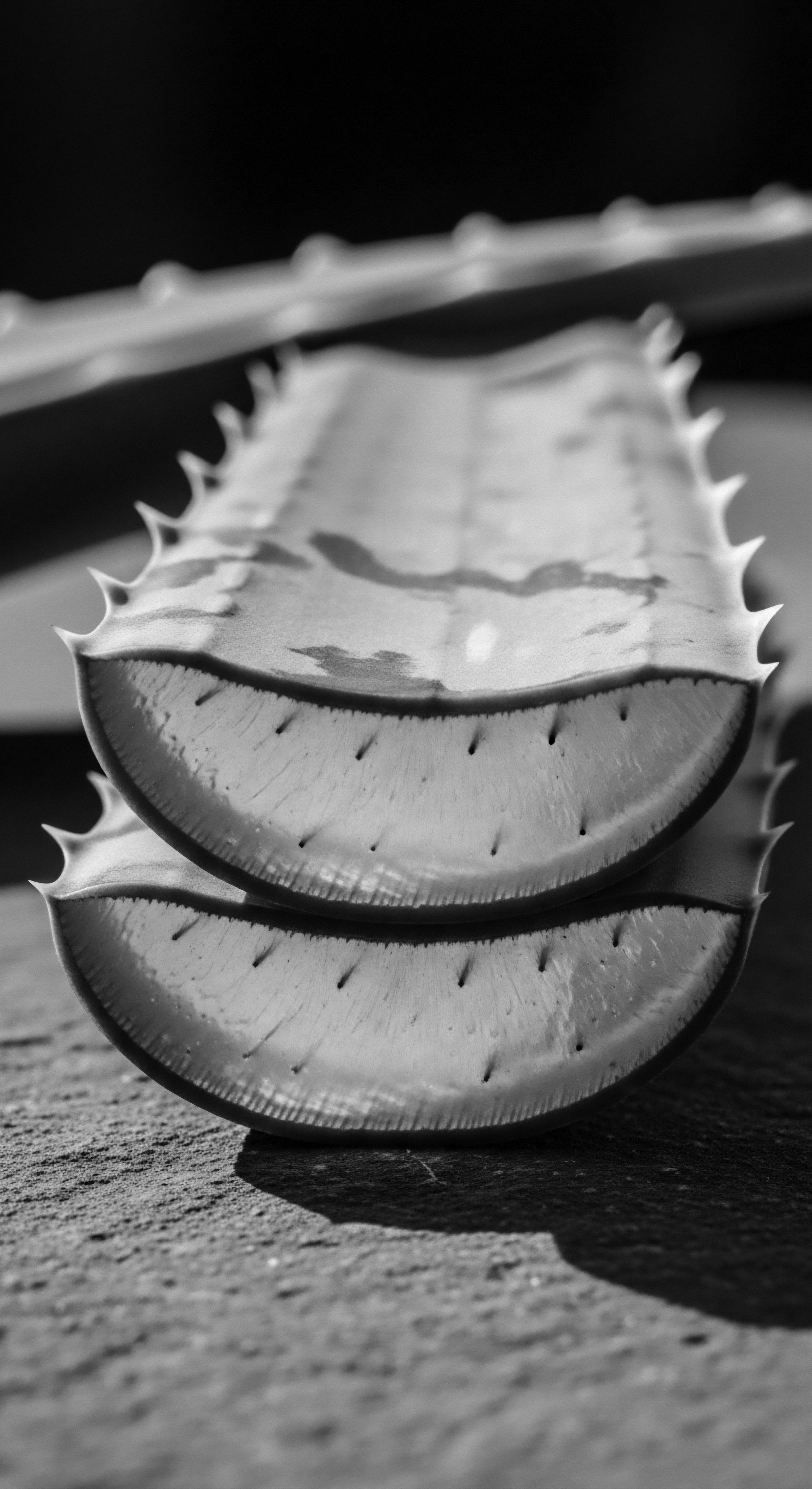
Protective Styling and Structural Integrity
Protective styles stand as a powerful testament to ancestral biomechanical wisdom. These styles, which include intricate Cornrows, elegant Twists, and robust Locs, tuck away the vulnerable ends of the hair, shielding them from environmental stressors and daily manipulation. By minimizing external forces and reducing the frequency of direct combing or brushing, these styles drastically lower the risk of mechanical fatigue and breakage. The communal aspect of creating these styles, often taking hours, allowed for gentle handling and the sharing of knowledge, further safeguarding the hair’s structural integrity.
The meaning here extends beyond mere aesthetics; it speaks to survival and resilience. During periods of immense hardship, such as enslavement, these practices became acts of profound resistance. Enslaved Africans, stripped of many aspects of their cultural identity, used intricate braiding patterns not only to maintain their hair with minimal resources but also to convey secret messages and even to map escape routes. This practical application of hair styling, rooted in a deep understanding of its physical properties and how to preserve them under duress, highlights the intrinsic link between Hair Care Biomechanics and the enduring spirit of a people.
| Traditional Practice Chebe Powder Application |
| Biomechanical Principle Addressed Reduced friction, moisture retention, increased pliability. |
| Observed Benefit (Heritage Context) Minimizes breakage, preserves length, enhances hair's natural resilience. |
| Traditional Practice Shea Butter & Oil Use |
| Biomechanical Principle Addressed Lowered coefficient of friction, improved viscoelasticity. |
| Observed Benefit (Heritage Context) Facilitates detangling, softens strands, prevents dryness and brittleness. |
| Traditional Practice Protective Braiding (Cornrows, Locs) |
| Biomechanical Principle Addressed Minimized mechanical stress, shielded ends from environmental damage. |
| Observed Benefit (Heritage Context) Promotes length retention, reduces daily manipulation, acts as a form of cultural communication. |
| Traditional Practice These practices demonstrate an inherent understanding of hair's physical needs, passed down through generations. |
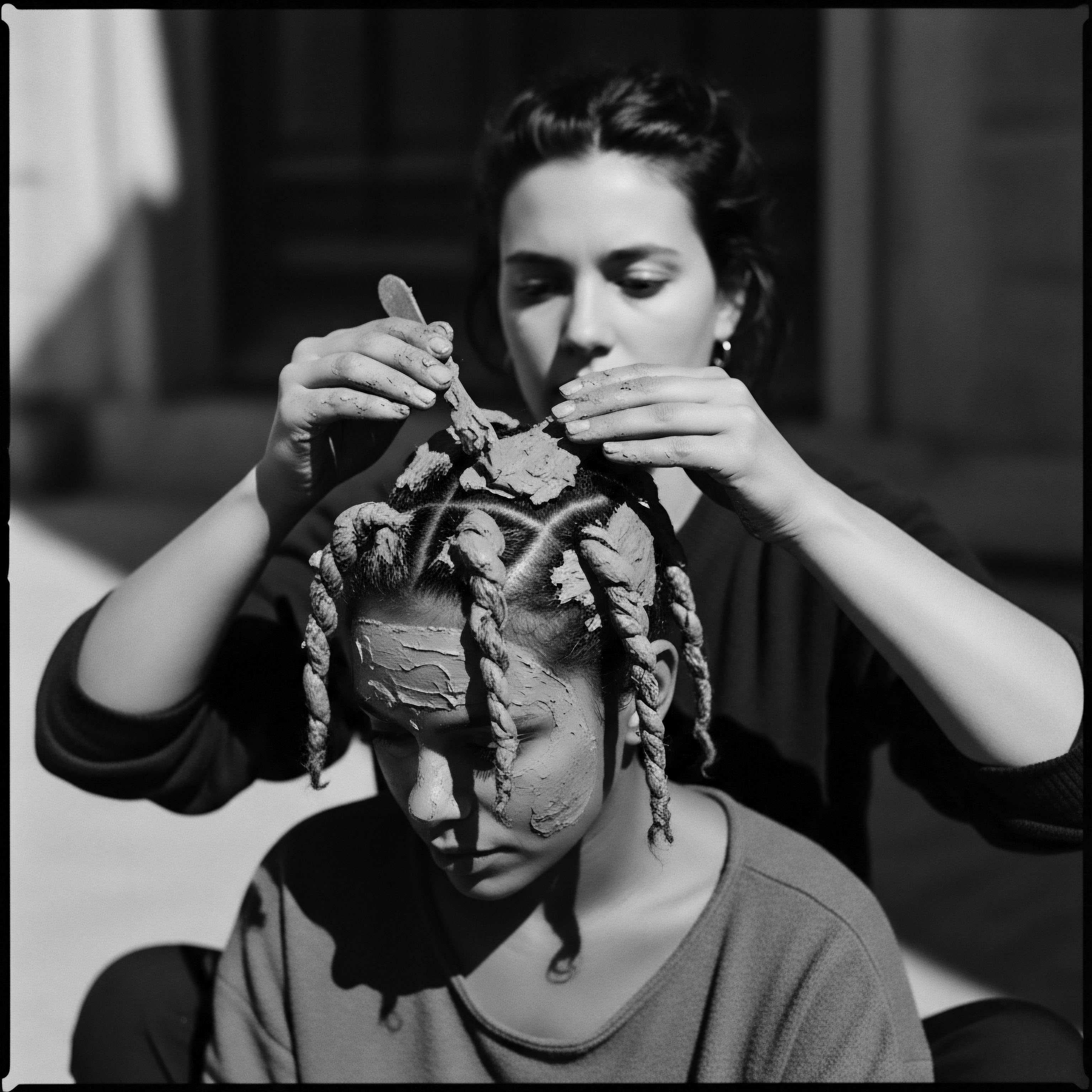
Academic
The academic meaning of Hair Care Biomechanics stands as a rigorous, interdisciplinary examination of the mechanical behaviors of hair fibers, their structural responses to external forces, and the underlying material science that governs these interactions. This field systematically investigates how hair, as a complex keratinous material, deforms, stresses, and ultimately fails under various mechanical loads such as tension, compression, shear, and torsion. It delves into the molecular architecture of the hair shaft, considering the intricate arrangement of keratin proteins, the cross-linking disulfide bonds, and the network of hydrogen bonds that collectively dictate hair’s tensile strength, elasticity, flexibility, and fatigue resistance. For textured hair, this inquiry becomes particularly compelling, as its unique morphological characteristics present distinct biomechanical challenges and opportunities for study.
The distinctive morphology of Afro-textured hair, characterized by an elliptical or kidney-shaped cross-section and a highly coiled, often S- or Z-shaped, helical configuration, results in inherent points of curvature and torsion along the fiber. These structural attributes, while contributing to its unique aesthetic, also influence its mechanical properties. Academic studies consistently report that Afro-textured hair generally exhibits lower tensile strength and a reduced stress at break compared to straight hair types, making it more susceptible to fracture.
This reduced strength is not due to a lesser amount of keratin or a different distribution of cystine-rich proteins, which are critical for strength, but rather stems from the physical stress concentrations that occur at the tight twists and turns along the coiled shaft. The mechanical forces applied during routine grooming, such as combing or detangling, are amplified at these curvature points, leading to a higher propensity for breakage and the formation of nodes.
A study by Khumalo, Dawber, and Ferguson (2005) observed that the apparent fragility of African hair is not linked to the distribution of cystine-rich proteins within the hair fiber itself, suggesting that the issue is primarily structural and mechanical rather than compositional. Further research confirms that the fracture point of Afro-textured hair during tensile measurements frequently occurs in the twist regions of the fiber, highlighting these areas as zones of heightened mechanical vulnerability. This scientific understanding provides a critical lens through which to view ancestral hair care practices, revealing them as sophisticated, albeit uncodified, biomechanical interventions.
Afro-textured hair’s biomechanical characteristics, including its unique elliptical cross-section and coiled structure, lead to inherent stress concentrations that necessitate specialized care.
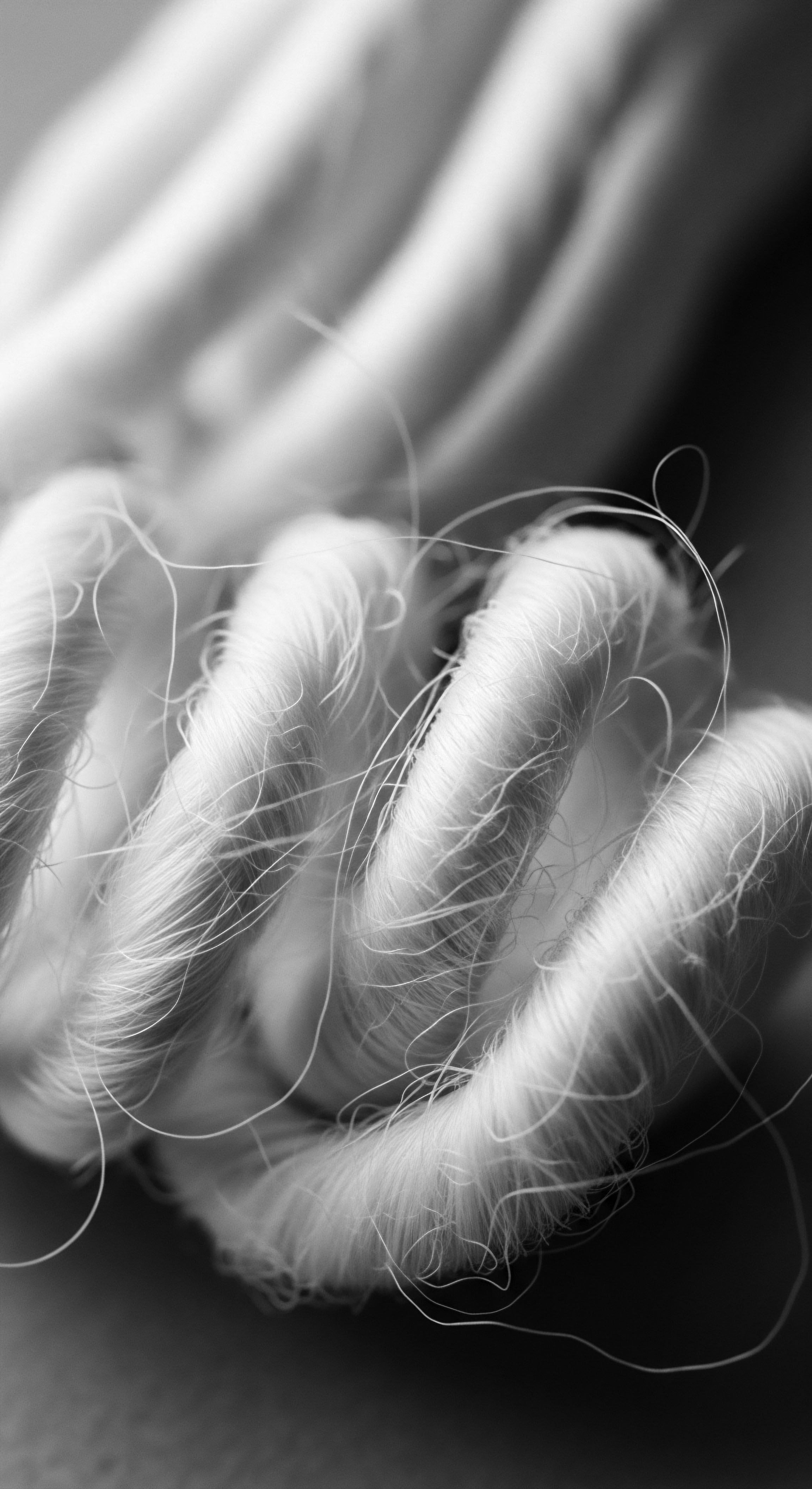
Biomechanical Interventions in Ancestral Practices
The historical and cultural contexts of textured hair care offer compelling insights into applied Hair Care Biomechanics, often predating modern scientific articulation. Ancestral communities, through generations of observation and collective experience, developed practices that implicitly addressed the biomechanical vulnerabilities of their hair. These practices were not random; they were carefully refined rituals designed to preserve the hair’s integrity, reduce mechanical stress, and promote its resilience.
Consider the widespread use of Chebe Powder by women of the Basara Arab community in Chad. This tradition involves coating the hair with a paste made from the powder, which is then braided. The scientific delineation of this practice reveals its biomechanical efficacy. The powder, when mixed with oils, forms a coating that acts as a physical barrier, significantly reducing friction between individual hair strands and external surfaces.
This coating minimizes mechanical abrasion and prevents the hair from tangling and knotting, which are primary causes of breakage in highly coiled hair. By reducing friction, the practice lowers the energy required to manipulate the hair and distributes stress more evenly across the fiber, thereby protecting its tensile strength and preventing fatigue. This method effectively creates a “lubricated system” that allows the hair to move more freely against itself and external forces, directly counteracting the propensity for breakage at points of high curvature.
This traditional Chadian practice is a powerful case study in applied Hair Care Biomechanics. While the Basara women did not articulate their methods in terms of coefficients of friction or stress-strain curves, their consistent results—demonstrably long and healthy hair—speak to an inherent understanding of these principles. The meaning here is profound ❉ ancestral wisdom, born from intimate knowledge of the body and the natural world, often aligned with scientific principles long before they were formally discovered. This highlights a critical, often overlooked, aspect of indigenous knowledge systems as sophisticated, empirically derived approaches to wellness.
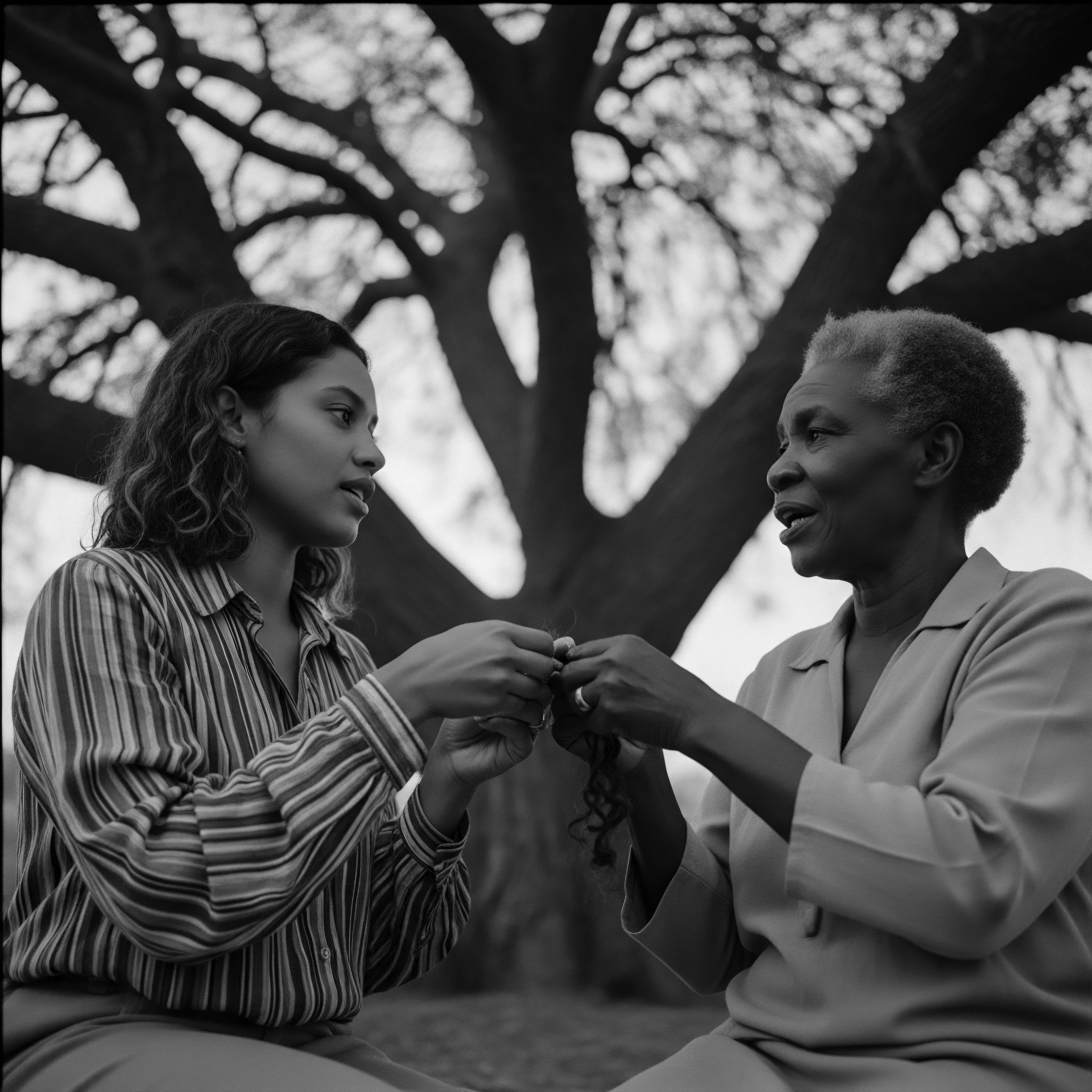
Beyond the Strand ❉ Societal Biomechanics of Hair
The academic meaning of Hair Care Biomechanics extends beyond the individual strand to encompass the societal forces that have historically acted upon textured hair. The concept of “hair politics” and the weaponization of hair texture during periods like slavery in the Americas represent a chilling example of biomechanics applied as a tool of oppression. Enslaved Africans were often forced to shave their heads, a brutal act designed to strip them of their identity and cultural connection, directly disrupting the physical and symbolic integrity of their hair. The imposition of Eurocentric beauty standards, which often valorized straight hair, placed immense mechanical and chemical stress on textured hair through processes like harsh straightening treatments (e.g.
lye relaxers, hot combs). These treatments, designed to alter the hair’s natural coiled structure, fundamentally compromise its biomechanical integrity by disrupting disulfide bonds and weakening the keratin matrix, leading to increased fragility and irreversible damage.
Conversely, the resilience movements, such as the Natural Hair Movement, represent a reclamation of Hair Care Biomechanics as a form of self-determination. By returning to ancestral practices and embracing the natural coiled structure of textured hair, individuals are consciously reducing the biomechanical stress imposed by chemical and heat styling. This shift is a collective acknowledgment that honoring the hair’s inherent design, rather than forcing it into unnatural forms, promotes its long-term health and strength.
It is a profound statement about self-acceptance and cultural affirmation, where the care of hair becomes a deliberate act of preserving both physical well-being and a cherished heritage. The continued exploration of Hair Care Biomechanics, therefore, must remain deeply rooted in these cultural and historical contexts, ensuring that scientific inquiry serves to uplift and validate the diverse experiences of textured hair.
- Follicle Morphology ❉ The shape of the hair follicle itself, which is often elliptical in textured hair, dictates the helical growth pattern of the hair shaft, influencing its points of natural curvature and potential stress concentrations.
- Keratin Architecture ❉ The precise arrangement of alpha-keratin fibrils and the surrounding keratin-associated proteins within the cortex contributes significantly to the hair’s overall mechanical properties, including its tensile strength and elasticity.
- Cuticle Integrity ❉ The outermost layer of overlapping cuticle scales serves as a protective barrier. Damage to these scales, often from excessive manipulation or harsh chemicals, compromises the hair’s ability to resist external forces and retain moisture.
- Water Management ❉ The hygroscopic nature of hair, particularly textured hair’s tendency to absorb and lose water, impacts its flexibility and susceptibility to mechanical damage. Dry hair is significantly more prone to breakage.
| Structural Component Hair Follicle Shape |
| Biomechanical Role Determines curl pattern and inherent torsion. |
| Relevance to Textured Hair Heritage Informs protective styling to manage natural coiling. |
| Structural Component Keratin Matrix |
| Biomechanical Role Provides tensile strength and elasticity. |
| Relevance to Textured Hair Heritage Ancestral practices aimed at preserving protein integrity through gentle handling and nourishment. |
| Structural Component Cuticle Layer |
| Biomechanical Role Protective barrier, regulates moisture. |
| Relevance to Textured Hair Heritage Emphasizes traditional use of emollients to smooth cuticles and reduce friction. |
| Structural Component Disulfide Bonds |
| Biomechanical Role Primary contributors to hair shape and mechanical strength. |
| Relevance to Textured Hair Heritage Understanding why chemical relaxers cause damage by disrupting these bonds. |
| Structural Component The physical characteristics of textured hair inform both its vulnerabilities and the historical ingenuity of its care. |
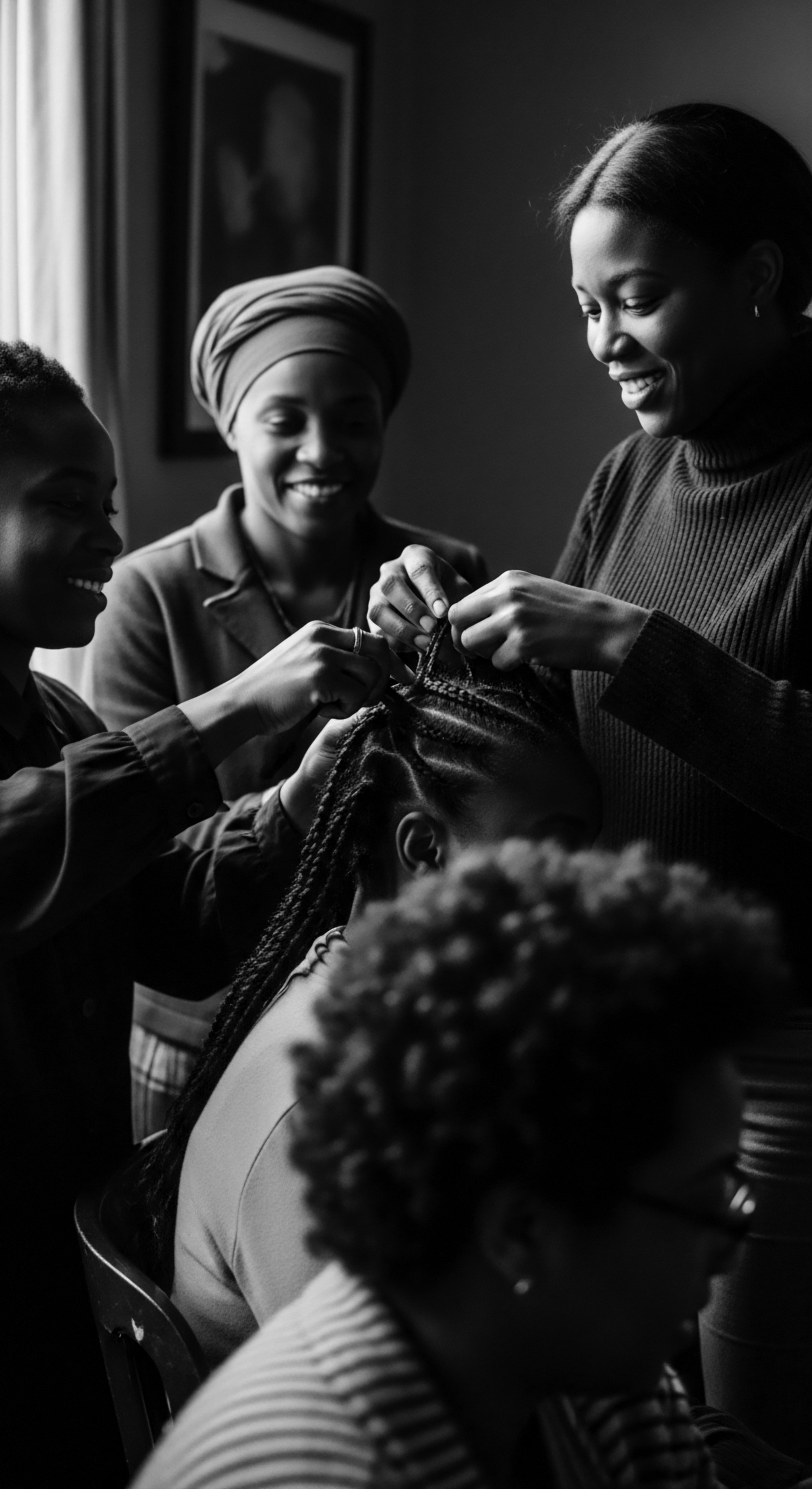
Reflection on the Heritage of Hair Care Biomechanics
The journey through Hair Care Biomechanics, from its elemental biology to its profound cultural resonance, reveals a continuous thread of wisdom stretching across generations. It is a story not just of scientific principles, but of ancestral ingenuity, resilience, and the enduring spirit of textured hair. This exploration compels us to see hair not as a static entity, but as a living archive, each curl and coil holding stories of adaptation, struggle, and triumph. The ‘Soul of a Strand’ ethos reminds us that care is never just about aesthetics; it is an act of honoring lineage, a mindful conversation with the physical legacy passed down through time.
The insights gleaned from Hair Care Biomechanics validate what many textured hair communities have known instinctively for centuries ❉ that their hair possesses a unique design, requiring specific approaches to care. The emphasis on moisture, on protective styles, on gentle handling – these are not merely modern trends, but echoes of practices refined over countless generations. They are the tangible expressions of a deep, embodied understanding of how to work with, rather than against, the hair’s inherent nature. This recognition elevates ancestral practices from folklore to sophisticated, empirically derived systems of care.
As we continue to decipher the complexities of Hair Care Biomechanics, we do so with a profound sense of reverence for the knowledge that has been preserved and transmitted through communal rituals and shared experiences. The scientific lens now illuminates the ‘why’ behind the ‘how’ of traditional care, affirming the brilliance embedded in practices that prioritized the health and longevity of textured hair. This understanding empowers us to approach hair care not as a task, but as a sacred ritual, a continuation of a tender thread that binds us to our past and guides us toward a future where every strand is celebrated in its authentic glory.
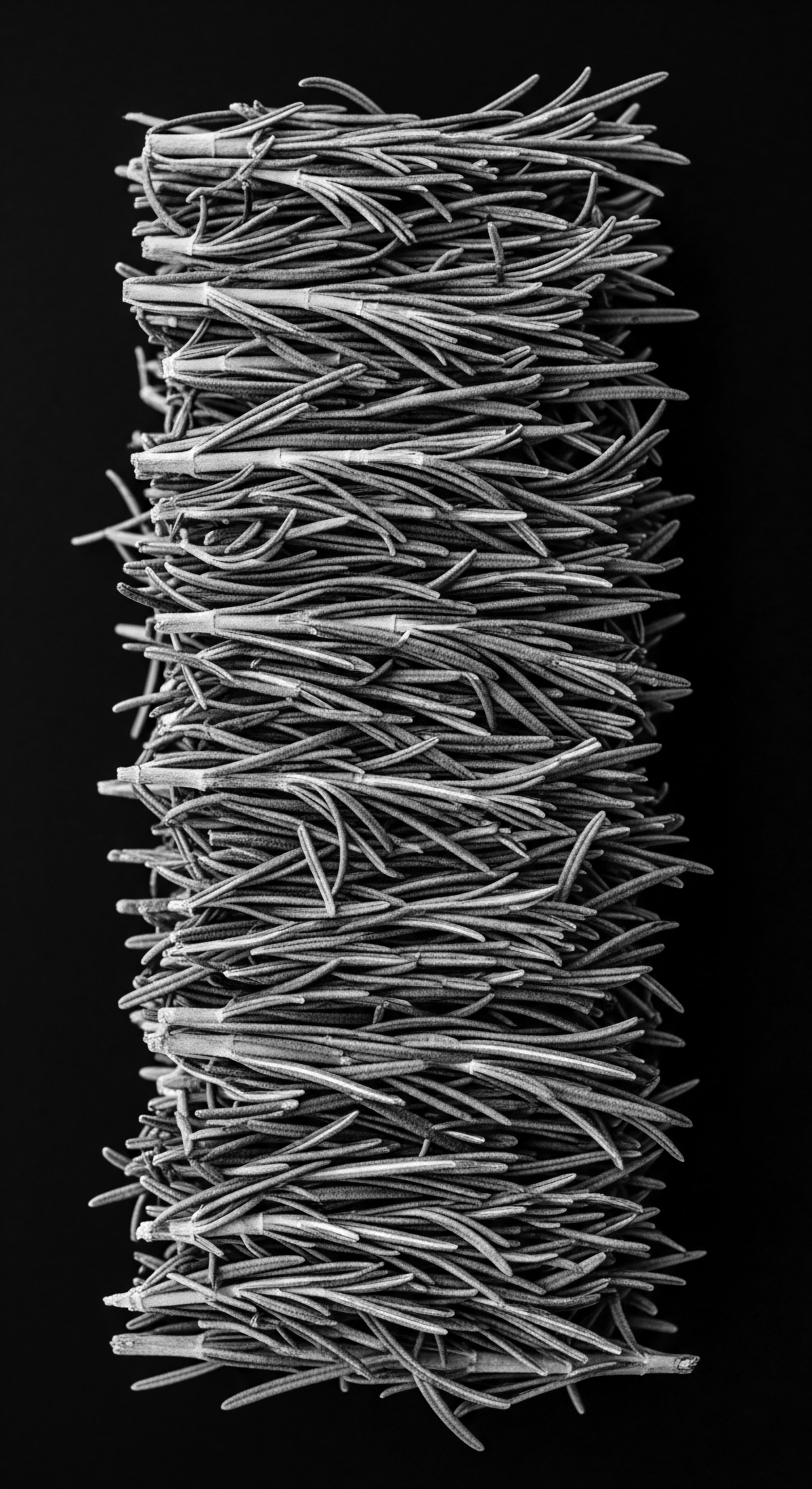
References
- Byrd, A. D. & Tharps, L. D. (2001). Hair Story ❉ Untangling the Roots of Black Hair in America. St. Martin’s Press.
- Cloete, E. Khumalo, N. P. & Ngoepe, M. N. (2020). The Journal of Investigative Dermatology.
- Jacobs-Huey, L. (2006). From the Kitchen to the Parlour ❉ Language and Becoming in African American Women’s Hair Care. Oxford University Press.
- Khumalo, N. P. Dawber, R. P. R. & Ferguson, D. J. (2005). Apparent fragility of African hair is unrelated to the cystine-rich protein distribution ❉ A cytochemical electron microscopic study. Experimental Dermatology, 14(4), 311-314.
- Mercer, K. (1994). Welcome to the Jungle ❉ New Positions in Black Cultural Studies. Routledge.
- Patton, M. F. (2006). Twisted ❉ The Dreadlock Chronicles. Africa World Press.
- Rooks, N. M. (1996). Hair Raising ❉ Beauty, Culture, and African American Women. Rutgers University Press.
- Thomas, A. et al. (2012). Interspecies comparison of morphology, ultrastructure, and proteome of mammalian keratin fibers of similar diameter. Journal of Agricultural and Food Chemistry, 60(9), 2434-2446.
- Xu, B. & Chen, X. (2010). Journal of the Mechanical Behavior of Biomedical Materials.
- Zamil, M. S. Harland, D. P. Fisher, B. K. Davis, M. G. Schwartz, J. R. & Geitmann, A. (2021). Biomechanics of hair fibre growth ❉ A multi-scale modeling approach. Journal of the Mechanics and Physics of Solids .
